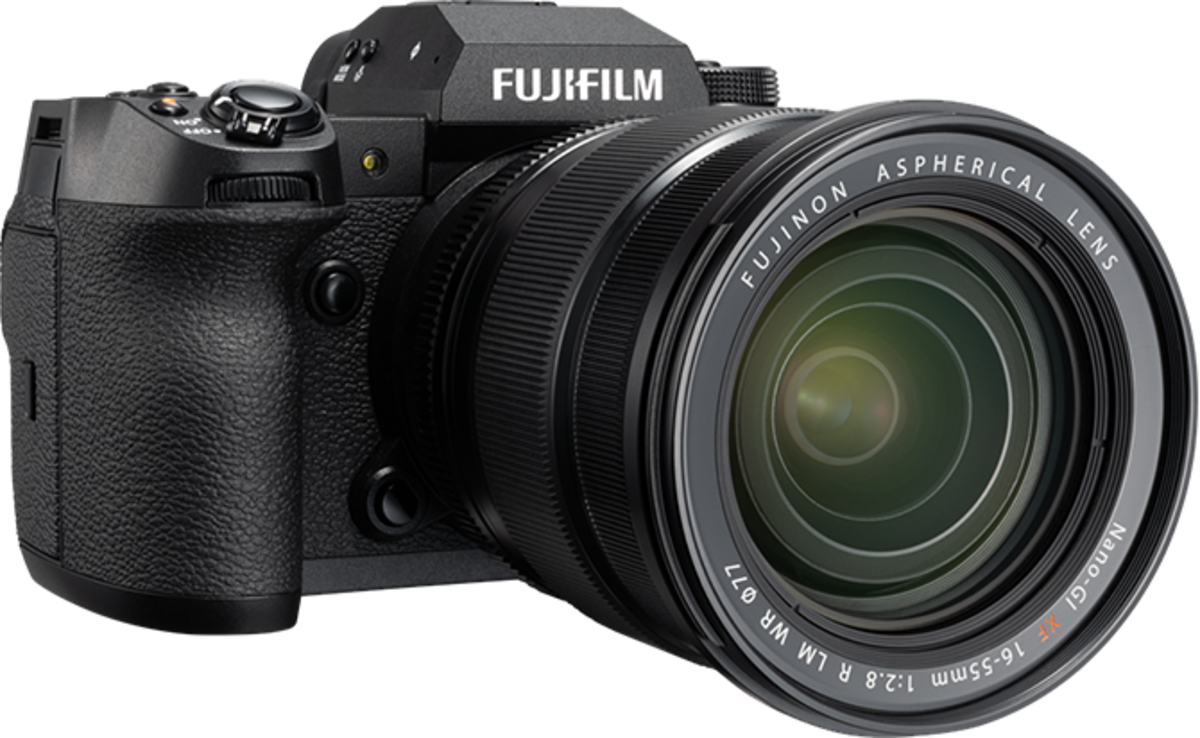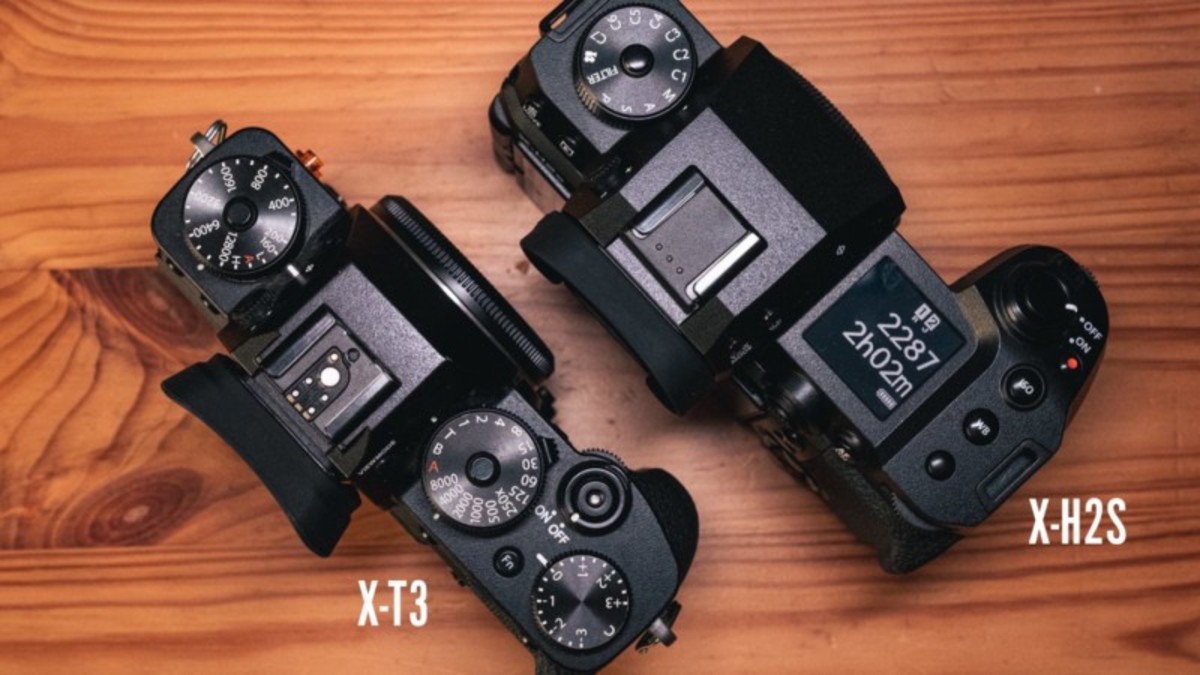The choice of whether or not to upgrade or buy a camera is a very personal one, and everyone has their own set of criteria to consider when determining whether or not the timing is ripe for either action.
Key Features
26.16MP APS-C X-Tran CMOS 5 Media: CFExpress (Type B) and SD/SDHC/SDXC/UHS-II Shutter speeds 15 minutes to 1/8000s (Mechanical shutter) Shutter speeds 15 minutes to 1/64000s (Electronic shutter) ISO 160- 12800 (80-51200 extended) Image Stabiliser: up to 7 stops 15fps mechanical shutter 40fps electronic shutter Eye Detection AF for People, animals, birds, automobiles, motorcycles and bikes, planes and trains. Movie File Formats:MOV, Apple ProRes 4:2:2, HEVC/H.265, MPEG-4 AVC/H.264, MP4, MPEG-4 AVC/H.264 AAC Movie file sizes: 6.2K, DCI4K, 4K, Full HD OLED 0.5 inch EVF with 5.76 million dots Vari-angle touch screen 3 inch LCD with 1.62 million dots Bluetooth WiFi 579g incl battery and card Battery capacity 720 shots, economy mode Battery capacity 580 shots, normal mode Film simulation modes: PROVIA/Standard, Velvia/Vivid, ASTIA/Soft, Classic Neg Hi, PRO Neg Std, Classic Neg, Nostalgic Neg, ETERNA/Cinema, ETERNA/Bleach Bypass, ACROS, Monochrome, Sepia Filter settings: Toy Camera, Miniature, Pop Colour, High-Key, Low-Key, Dynamic Tone, Soft Focus, Partial Colour (red), Partial Colour (orange), Partial Colour (yellow), Partial Colour (green), Partial Colour (blue), Partial colour (purple)
Appearance, Handling, and Controls
The X-H2S and the X-T range of cameras are distinguished from one another by a couple of significant physical features. To begin, the X-H2S has a considerably bigger handgrip than its predecessor. The typical camera body control dials have been replaced by the PSAM mode dial in the X-H2S. The front and back control wheels are used for secondary exposure control settings, and there is a dedicated ISO bottom on the top of the camera. It has a more comfortable grip. It seems quite natural and comfortable to hold for extended periods of time, and it fits reasonably well in the palm of the hand. In addition, because there is not a wheel that is specifically designated for driving, certain adjustments will have to be made. Changing to continuous low for events and switching to bracket mode for technically difficult exposure circumstances are two common uses for this feature. The dedicated Drive button located on the back, upper left of the camera is useful; nevertheless, in order to select the appropriate drive mode, you will need to use the control wheel located on the back of the camera. One further improvement to the design that I like is that the eyepiece of the electronic viewfinder (EVF) protrudes further from the back of the camera than it does in X-T cameras. The X-H2S has the same excellent level of build, materials, fit, and finish as its predecessor. This is one item that has not altered. The camera has a robust and reliable feel to it.
Control Dials vs. Classic Dials
One of the significant differences in upgrading to the X-H2S from the X-T3 is the layout of the settings and exposure dials. The X-H2S employs a mode dial and control wheels near the hand grip, which is comparable to standard DSLR layouts but substantially different from the traditional control dial configuration on the X-T series of cameras. The controls on the X-H2S are reasonable and easy to use, just different than what it used to be.
Autofocus
The comparatively slow speed and precision of the autofocus system of the Fujifilm X-Series cameras have long been a source of criticism. This is especially true when contrasted to the recent advancements that Sony and Canon have achieved in the autofocus systems of their respective cameras. Those problems have been addressed and resolved by the X-H2S, which features a newly developed sensor as well as a CPU. There is not another X-Series camera that can match the speed, accuracy, and responsiveness of the autofocus mechanism to subject movement as this one offers. In my experience with earlier X-Series cameras, I have not had significant difficulties with the autofocus performance of those cameras. One notable exception has been situations in which the subject is moving. In these situations, older autofocus systems frequently had a high rate of missing the focus entirely.
In-Body Image Stabilization (IBIS)
With IBIS and the enhanced focusing, you can never miss any photographs because you couldn’t focus or because you accidentally moved the camera.
Size and Weight
The width of the X-H2S and the X-T3/4 are quite comparable; however, the X-H2S is significantly deeper than the X-T3/4. This is because the X-H2S has a significantly wider grip area and is designed to support additional input/output choices, a larger battery, and a larger CFExpress Type B card. The X-H2S, when equipped with its battery and memory cards, weighs 680 grams, whereas the X-T3 weighs only 550 grams. Having said that, I have always used my X-T3 with a SmallRig L-Bracket/Grip, and in this situation, the X-H2S is somewhat lighter than the X-T3 in this configuration, coming in at 688 grams. Additionally, the addition of the SmallRig L-Bracket/Grip causes the X-T3 to be approximately 10.6 centimeters taller than the X-H2S. (approximately 10.3 cm).
Overall Image Quality
The image quality is comparable, and in some cases even identical, to that of cameras using X-Trans sensors from prior generations. To put it another way, it’s amazing, and it benefits from the same visual personality as the cameras that came before it.
High ISO
The image quality at high ISO appears to be pretty much exactly the same as it was with the prior X-Trans sensors. This holds true for the overall image quality as well. The ISO range and behavior appear to be almost identical to those of the X-T3.
Video
The X-H2S has substantially enlarged and improved its video capabilities. When compared to the X-T3, the X-H2S features a separation of settings when transitioning from the photo mode to the video mode. This is one of the more straightforward differences. Because of this, using the X-H2S for video while also using it to take images will be less of a hassle because you won’t have to switch the exposure or any of the other settings between the two modes as frequently. Shooting at 4K 120p video mode is very impressive with both the quality of the video and the stability of the clips due to the IBIS, even when shooting at 300mm handheld.
Battery Life
The issue with X-T series of cameras was the very short battery life and the relatively small battery. The X-H2S makes use of the same bigger NP-W235 battery that is used in the X-T4 and the GFX cameras. The battery life of the X-H2S has shown that you don’t need to worry about changing the batteries in the camera far less frequently than with the X-T3.
Conclusion and Recommendation
In a nutshell, the Fujifilm X-H2S represents a significant advancement over any of the X-series cameras that came before it. The performance of the autofocus is significantly better than that of the cameras that came before it in the series, and as a result, you should have more confidence in your ability to get the shot in difficult focus settings. The enormous increase in capacity for recording and playing back video should satisfy the vast majority of people’s video requirements across the board. The Fujifilm X-H1 is now the company’s most costly APS-C camera because it serves as the company’s new flagship model for the X-System. This camera should have a lengthy life and the capacity to expand with your needs as a result of the incorporation of a significantly more powerful processor than its predecessor. It would appear that Fujifilm has once again made one of the most proficient APS-C cameras and one of the finest values in photography with the X-T3 Mark II. This was also the case when the X-T3 was first introduced. This content reflects the personal opinions of the author. It is accurate and true to the best of the author’s knowledge and should not be substituted for impartial fact or advice in legal, political, or personal matters. © 2022 Maina Wilson









